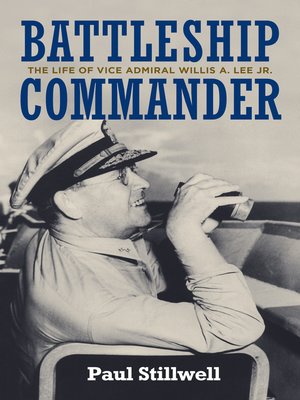
Battleship Commander; The Life of Vice Admiral Willis A Lee Jr. By Paul Stillwell. Naval Institute Press, Annapolis, Maryland, 2021.
Reviewed by Tim Coyle
Willis A. Lee (1888 – 1945) was a naval officer of his time – characterised by sheer hard work for the advancement of naval technology and not himself. He was a naval technocrat, not a naval diplomat or politician; he achieved three-star rank through championing innovation in the face of the enemy.
He died suddenly from a heart attack in a boat on his way to work on 25 August 1945, several days after the Japanese surrender. In those few days, he felt a keen melancholy that he was not present at the surrender, having spent over three years in the Pacific theatre in command of the US Navy’s last generation of battleships. He imagined there would be little need for a battleship admiral in the aviation-dominated post-war navy.
Paul Stillwell is a well-known author of 25 books, six of which are dedicated to battleships. He began this book project in 1976 and assembled over 150 first-person accounts from those who knew Lee. Most of these accounts were collected in the late 1970s when many of these individuals were able to provide Stillwell with the impressive collection of primary sources. The accounts show Lee as modest, forgiving, publicity-avoiding and not a stickler for pomp and ceremony or administrative niceties.
Lee’s early career from the Naval Academy to Lieutenant Commander was characterised by his skill at arms. He was a champion shot and represented the navy in prestigious shooting matches, including the Olympic Games in 1920. Service at sea in command of destroyers and cruisers in the 1930s alternated with duty in the Navy Department. As a captain in 1939-42 he worked at preparing the navy for war through the design of surface combatants. He sent observers to the Royal Navy to learn from British operational experience and seized on the tactical potential for radar at sea, particularly at night when few flag officers knew or were interested in this technology.
Lee pioneered the concept of the Combat Information Center with radar as the centrepiece. As flag officer Task Force 64 his flagship, USS Washington, had surface search and fire control radar installed in July 1942. Lee had the equipment receivers located handy to his flag bridge and used it successfully in the night action off Savo Island on 14-15 November 1942. TF64 engaged a Japanese bombardment group and forced the group’s retirement with the loss of the battleship Kirishima. This action prevented the bombardment of Henderson Field and the Japanese attempt to land troops and supplies on Guadalcanal.
Despite this successful surface action, USN battleships moved to become large deck anti-aircraft platforms for carrier defence. Lee forcefully advocated for large-scale adoption of the 20 mm and 40 mm anti-aircraft guns which replaced the ineffective 1.1 inch mountings. As a gunnery specialist he worked with scientists in the development of the 5 inch anti-aircraft proximity fuse. But opportunities for his battleships to deal fatal blows to their Japanese opponents were denied. Admiral Halsey’s tactical error of pursuing a Japanese feint at the Battle of Leyte Gulf on 25 October 1944 saw Lee’s TF34 battleships and cruisers big gun capabilities wasted as the exposed escort carriers and escorts of Taffy 3 bore the full brunt of Japanese attacks at the Battle of Samar.
The kamikaze scourge was the one Japanese capability which really worried the USN. Despite the huge increase in AA armaments, largely championed by Lee, ships were being lost and extensively damaged which threatened the viability of the planned upcoming invasion of the Japanese home islands. Lee’s technical analytical talents, coupled with his three years of combat command in the war zone, saw him appointed to lead TF 69, based at Casco Bay, Maine, a trials unit to devise tactics, equipment and weapons to counter the kamikaze threat. He took up this duty on 02 July 1945; however, the war, and Lee’s life, was to end in the next month.
There are many biographies of naval commanders in the wars of the 20th century and Lee, at first sight, might seem to have been a minor player as commander of an arguably obsolescent naval capability. However, Stillwell has dived deeply into the life of a modest but brilliant operational commander, respected by all ranks. The author’s impressive collection of memories of Lee from those who knew him vary from considered professional assessments of his leadership qualities to folksy anecdotes which not only illustrate his humanity but gives the reader an insight into the world of the 1920s and 30s and the vast US Navy of the war years. A fine biography of a fine man.



